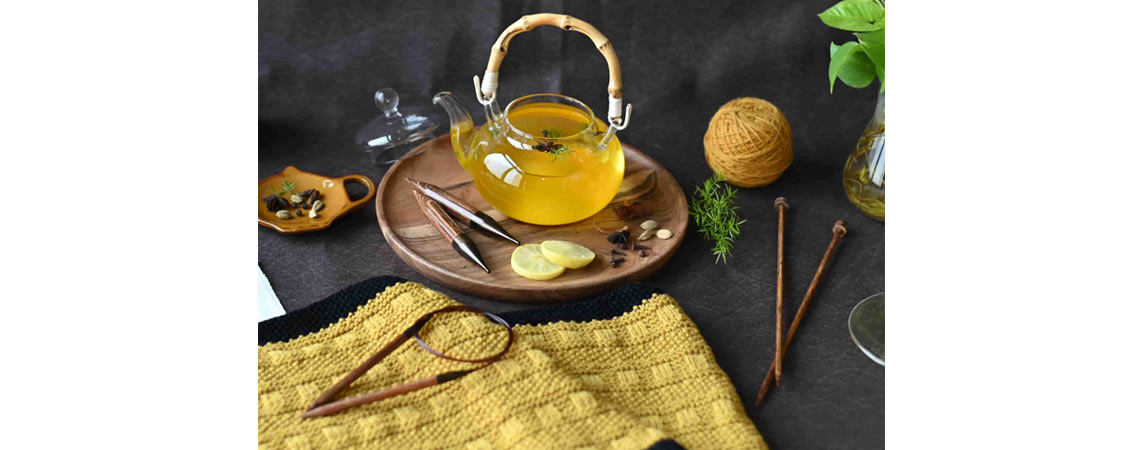The world of knitting abbreviations can be a labyrinth filled with cryptic letters that hold the key to intricate techniques. Today, KnitPro will take you through one abbreviation: P2tog tbl. As the name suggests, P2tog tbl is a technique for decreasing a single stitch purlwise. Simply purl two stitches together to the back loop with your chosen knitting needle through the back loop. It might sound complex, but it's really simple to perform! While requiring a bit more finesse than your standard purl, this stitch unlocks a whole new level of shaping in your knitting projects.
So, why should you care about the P2tog tbl?
This little stitch is a workhorse for creating clean, slanted decreases. It's essential for shaping necklines, armholes, and raglan sleeves, adding a touch of professional polish to your garments. But its benefits extend beyond aesthetics. The P2tog tbl creates a more stable decrease compared to its purl-together cousin, resulting in a fabric that drapes beautifully and resists unwanted gaps.
Working a P2tog tbl

Knitting needles: Pick up your most essential tool. It can be straight knitting needles, circular knitting needles (great for working in the round!), double pointed needles (perfect for small circumferences like socks or mittens), or even interchangeable circular needles that offer the versatility of all three! Choose a needle size appropriate for your yarn weight.
Yarn: Grab your favorite yarn, keeping in mind the weight and project requirements.
Ready? Let's break down the steps:

Identify your stitches: Locate the two stitches you want to decrease using the P2tog tbl.
Insert your needle: With your empty right needle, insert it from right to left behind the second stitch on the left needle.
Grab the back loops: Here comes the tricky part! You need to grab only the back loops of both stitches. Imagine each stitch as having a front loop (the one facing you) and a back loop (the one closer to the needle). Aim your needle tip slightly behind the front loop and scoop up just the back loop.
Bring the needle forward: Once you have the back loops on your right needle, gently maneuver it forward so the working yarn is now in front of your work. This might involve twisting your wrist slightly.
Purl as usual: Now it's familiar territory! Wrap the yarn over your right needle as you normally would for a purl stitch and knit those two back loops together. Slide the decreased stitch off the left needle.
Conquering the Challenge:
The P2tog tbl can feel complex at first, especially the maneuver to grab the back loops. Here are some tips to help you master it:
Practice makes perfect: Like any knitting technique, practice is key. Grab some scrap yarn and straight knitting needles and dedicate some time to working the P2tog tbl until it feels comfortable.
Loosen your stitches: Tight stitches can make it harder to isolate the back loops. Try loosening your stitches slightly on the row before the decrease.
Use a stitch marker: Place a stitch marker before the two stitches you want to decrease. This helps you visually identify them and avoid confusion.
Consider alternative methods: If the P2tog tbl still feels too challenging, you can try an alternative decrease. Purl one stitch, slip it back onto the left needle with the yarn in front, pass the second stitch over the first, and slip it back onto the right needle. This creates a similar slanted decrease, although the look might differ slightly.
Beyond the Basics:
The P2tog tbl opens doors to various shaping possibilities. Here are a few ways you can incorporate it into your knitting:
Necklines: Use P2tog tbl strategically to create a beautifully shaped neckline that slopes gently toward the shoulders on your circular or double pointed needles.
Armholes: Decreases with P2tog tbl along the armhole, ensuring a smooth transition from the body of the garment to the sleeve. You can use interchangeable circular needles for easy maneuvering.
Raglan Sleeves: This decrease is a favorite for shaping raglan sleeves, creating clean lines and a comfortable fit.
With a little practice and these helpful tips, you'll be a P2tog tbl pro in no time! This versatile decrease will elevate your knitting projects, adding a professional touch and creating beautifully draped garments. Stay tuned for more informative blog posts on various knitting or crocheting techniques.












